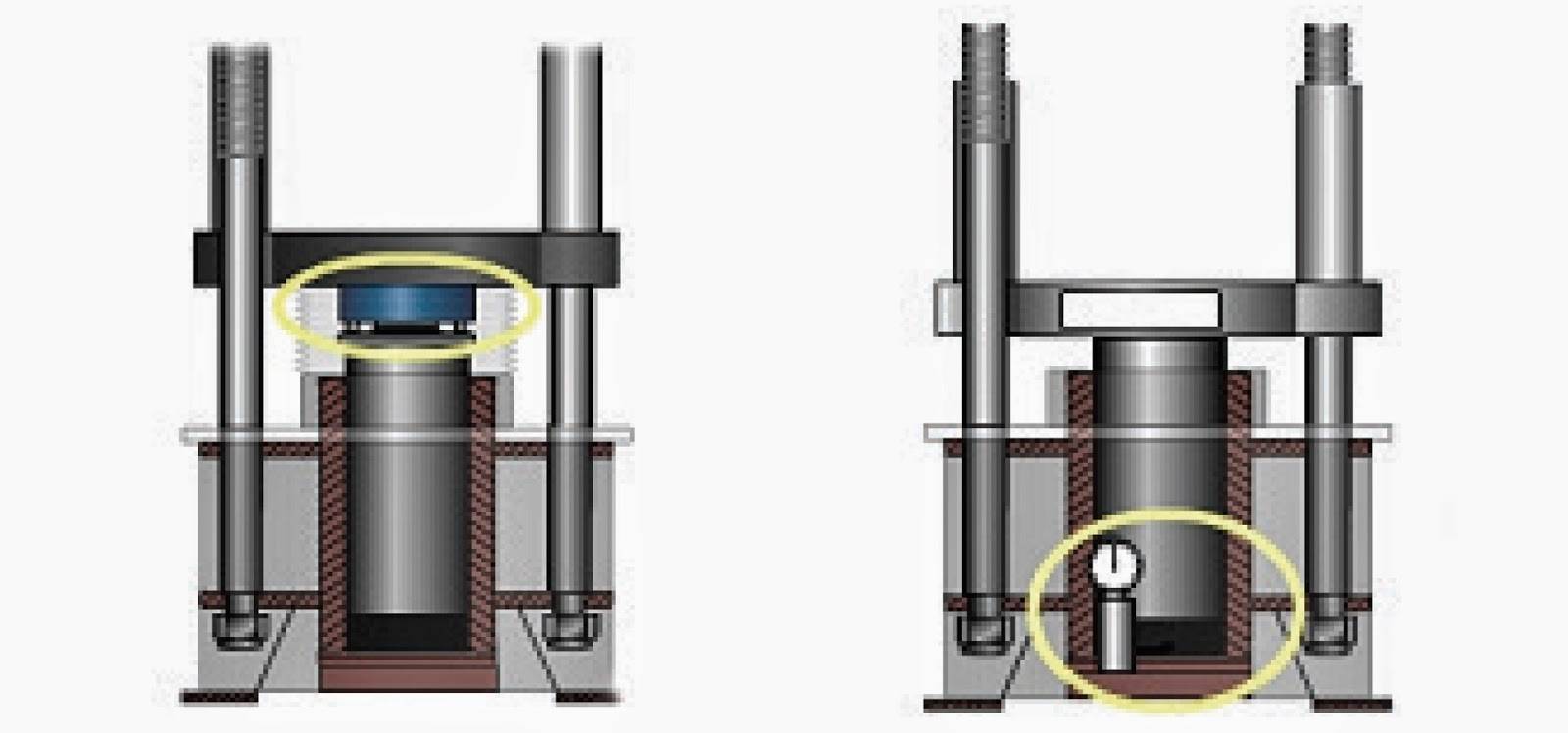
Design Differences: Left Load cell measures force directly | Right Pressure Transducer measures force indirectly
For instance, moving the cylinder requires some hydraulic pressure to overcome the friction between the piston and cylinder; raising the piston off the cylinder bottom can require a significant amount of pressure; and the weight of the oil itself creates pressure in the system. This pressure creates errors in the indication of load and can raise the lowest calibrated reading (sometimes as high as 10% of capacity). Machines using pressure transducers attempt to eliminate these inherent load measuring errors:
Systems are designed without seals ... Since piston seals cannot be used on pressure transducer systems because of the frictional forces that would result, hydraulic fluid spills out of the top of the cylinder. Extra drain lines are needed to return the fluid to the reservoir. Over time the overflow can increase as the piston and cylinder assembly wear resulting in decreased testing speeds
Additional plumbing and fittings are needed to eliminate friction ... Hydraulic bearing pressure and return lines are used to float the piston. Meant to keep the piston from touching the cylinder sides to eliminate friction, it requires more parts, more mechanical adjustments and could possible limit the machines ability to handle off-center loading.
Electrical pressure offset is required for the weight of the oil in the cylinder ... The pressure reading is affected by the weight of the column of oil. As the piston is raised, the volume and height of oil in the cylinder changes requiring a complex chain and pot assembly to electrically offset the weight of the oil as the piston is moved. Accuracy of the load readings over the entire stroke of the machine is questionable.
When making critical business, design, or process decisions based on the mechanical properties of a material, shouldn’t these properties be measured directly with a load cell rather than indirectly with a pressure transducer?
Download the white paper